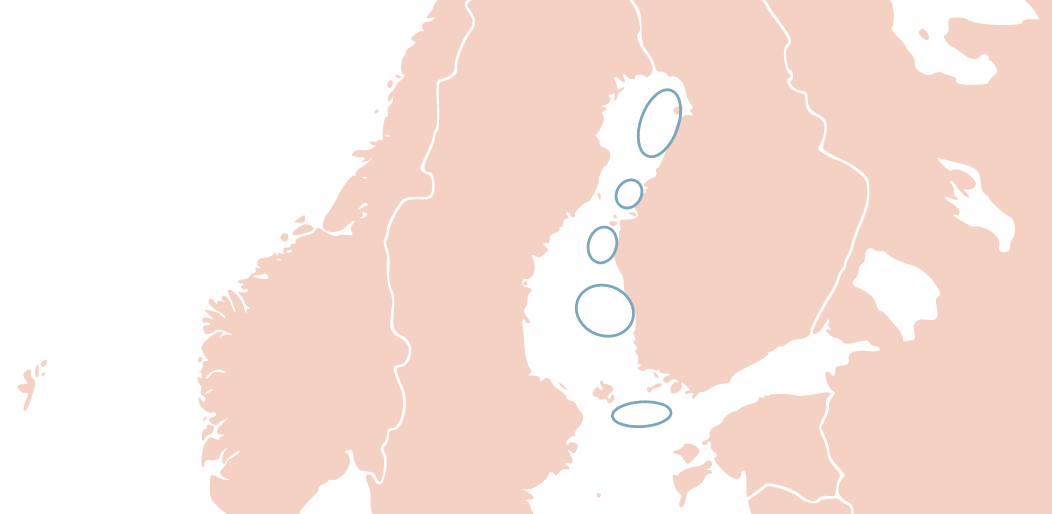Offshore wind power in Finland
Finland is a leader in promoting renewable energy and the energy transition. The national goal is to achieve carbon neutrality as early as 2035 and to establish the first welfare society in the world to completely renounce fossil fuels. Finland's innovative and dynamic corporate environment, state-of-the-art technology, and exceptional know-how provide excellent conditions for achieving this goal.
The rise of the wind energy industry is a striking illustration of Finland's potential. In under a decade, commercial wind power surpassed all other electricity generation modes in terms of cost efficiency. Projects are moving along at a tremendous pace, and last year saw yet another record-breaking number of projects coming online. Finland added around 2.4 GW of new capacity in 2022, bringing the country's total installed capacity to over 5.6 GW, the bulk of which is currently onshore. Since then, the capacity has grown up to 6.4 GW, consisting of more than 1,500 WTGs.
Huge growth potential for offshore wind
While onshore developments continue to grow rapidly, offshore projects are gaining attention. With Finland's ambitious climate goals and its geopolitical incentive to be self-sufficient, offshore developments are becoming increasingly important. Not surprisingly, offshore wind is an integral part of Finland's strategy for electrifying and decarbonizing industry and transportation.
The importance of offshore wind has recently been recognised by Finland’s new government: Finland plans to establish an ambitious target for offshore wind and create a competitive advantage for Finland over other countries of the Baltic Sea. The government programme includes plans to improve the business and legal environment, aiming to encourage and streamline the development and construction of offshore wind.
So far, there is only one operational offshore wind farm in Finland. The Tahkoluoto wind farm comprises 11 WTGs with sub-sea foundations and has a total capacity of 44.3 MW. This project demonstrated that offshore wind power is perfectly feasible in frozen sea conditions in the Nordic region. An expansion to 40 WTGs, each with a capacity of over 15 MW is under development. The expansion project obtained a land use plan in 2022, secured area use rights in early 2023, and is estimated to be completed by 2028.
Shallow depth and lower salinity of waters combined with good wind conditions create an ideal offshore environment. A remarkable pipeline of over 30 projects in total of 57.6 GW has been created as a result of market interest and long-term efforts. A number of projects under development are between 1,200 and 1,800 MW. The biggest projects in the pipeline are between 7,500 and 10,000 MW.
As can be seen from the rapidly growing pipeline, Finnish offshore wind power has remarkable growth potential. The Finnish TSO, Fingrid Oyj, has also outlined future developments in their electricity system vision of 2023. According to the most optimistic scenario, the Finnish offshore wind production could increase up to 71 TWh by 2035 and 150 TWh by 2045. In all four Fingrid’s scenarios, the electricity consumption is expected to rise from current 86 TWh to 115-185 TWh by 2035. Offshore wind could play a key role in helping to meet the growing electricity demand.
Siting of offshore projects
Significant efforts have been made on a strategic level to make offshore wind compatible with other activities and protected values in the Baltic Sea. One major step was the creation of the "Maritime Spatial Plan 2030" which identified several potential areas for offshore development. The document was drawn up by Finnish regional councils and approved in 2020. Criteria considered include nature conversation, the impact on landscape, national defence interests, and the needs of maritime traffic and other commercial activities.
The Maritime Spatial Plan considers the Gulf of Bothnia as the most suitable location for large offshore wind power projects. Additionally, several potential sites have been identified in the Southern Bothnian Sea and the Archipelago Sea. The plan is also by no means exhaustive. Aland and its surrounding sea areas, for example, are not covered, but there are substantial projects under development there.

Wind to hydrogen
Cost-competitive wind power is key in unlocking Finland’s potential for green hydrogen production. In early 2023, the Finnish Government adopted a resolution confirming Finland’s goal to become a European leader throughout the hydrogen value chain. Finland intends to produce at least 10% of the EU's emissions-free hydrogen by 2030. In addition to supplying the domestic industry, transport and energy sector, the aim is for Finland to become a major exporter of hydrogen, electric fuels and green steel.
To exploit the potential, Finland is making significant efforts to create a hydrogen infrastructure. This includes the construction of a national hydrogen network and a joint pipeline with Sweden (the "Nordic Hydrogen Route"), through which green hydrogen will be transported on a large scale from areas with high wind power production to industrial customers. The pipeline is planned to be operational by 2030. Over the longer term, an expansion via the Baltic countries and Poland all the way to Germany is planned (the “Nordic-Baltic Hydrogen Corridor”). Further prospects of an infrastructural backbone for offshore wind-to-hydrogen arise from the project launch for the “Baltic Sea Hydrogen Collector”, a pipeline system envisaged to connect wind power areas in the Baltic Sea to Central European markets.
In the Finnish offshore wind industry, concrete business cases around offshore wind as electrolyser feedstock are already entering the stage on a project level. Hydrogen potential is present particularly in the ongoing planning of large-scale wind farms in the Finnish EEZ, where scenarios involving decentralised hydrogen production at source or centralised offshore facilities are being assessed.